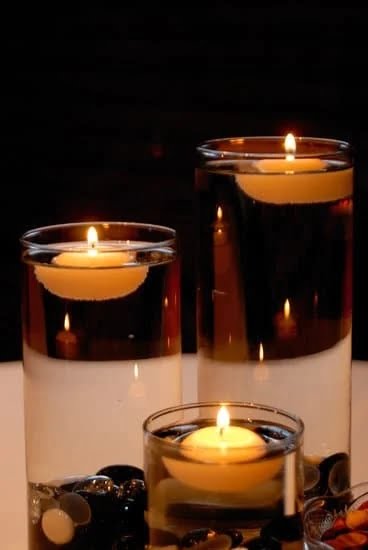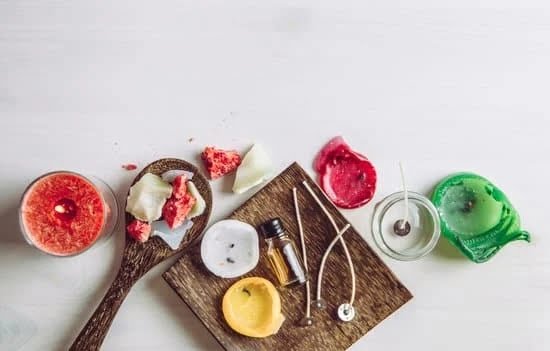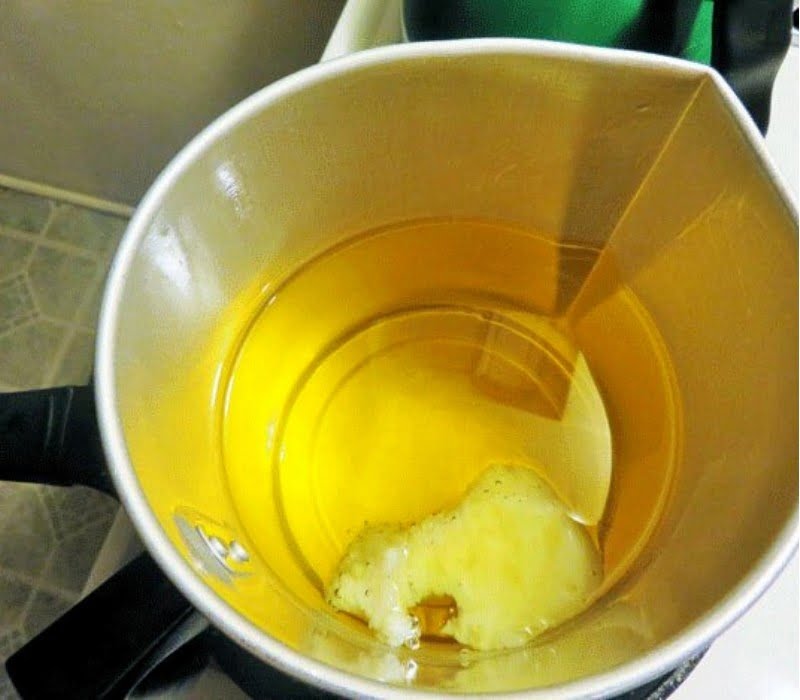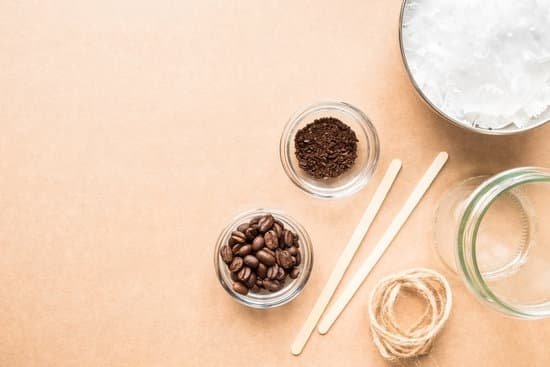Candle making is a creative and rewarding hobby that allows you to personalize your space with beautiful scents and ambiance. But, have you ever wondered what oils are best to use when making candles?
The choice of oils plays a crucial role in the overall quality of your candles, from the fragrance they emit to their burn characteristics. In this article, we will explore the importance of choosing the right oils for candle making and provide a comprehensive guide on essential oils and fragrance oils that you can use to create captivating scents.
When it comes to selecting oils for candle making, it’s important to understand the difference between essential oils and fragrance oils. Essential oils are derived from natural sources such as plants, flowers, or fruits through processes like steam distillation or cold pressing. They offer unique aromas and potential therapeutic benefits due to their natural compounds.
On the other hand, fragrance oils are synthetic or artificially enhanced fragrances designed specifically for candle making. While both options have their merits, understanding their differences will help you make an informed decision on which type of oil is best suited for your needs.
In the following sections, we will delve into the world of essential oils for candle making. We will explore a comprehensive guide highlighting some of the top essential oils commonly used in candle making and provide tips on how to choose essential oils that align with specific moods or desired ambiances. Additionally, we will discuss the creative possibilities offered by fragrance oils in candle making and how they allow you to unleash your creativity with captivating scents.
So whether you’re a seasoned candle maker looking to expand your scent repertoire or someone just starting out on this fragrant journey, stay tuned as we guide you through everything you need to know about selecting the right oils for candle making. With our expert tips and insights, you’ll be well-equipped to find your signature scent and unleash your creativity in this aromatic craft.
Understanding Essential Oils vs. Fragrance Oils
When it comes to candle making, one of the most important decisions you’ll need to make is choosing the right oils. There are two main types of oils used in candle making: essential oils and fragrance oils. Understanding the difference between these two types of oils and knowing which one to use will greatly impact the quality and scent of your candles.
Essential Oils: Essential oils are natural plant extracts that contain the concentrated aroma compounds of various plants. These oils are derived through processes like steam distillation or cold-press extraction, ensuring that they retain their natural therapeutic properties. Essential oils offer a wide range of scents, from floral and citrusy to herbal and woody.
Fragrance Oils: Fragrance oils, on the other hand, are synthetic fragrances created specifically for candle making. These oils are designed to mimic popular scents found in nature or create unique aromas for candles. Fragrance oils can offer a wider variety of scents compared to essential oils because they are crafted using a combination of aroma chemicals and natural ingredients.
So, which one should you use for your candles? The choice ultimately depends on your preferences and priorities. If you prioritize using natural ingredients or if you plan on using your candles for aromatherapy purposes, essential oils would be your best bet. On the other hand, if you’re looking for more diverse scent options or want a stronger and longer-lasting fragrance in your candles, fragrance oils may be the better choice.
Regardless of whether you choose essential oils or fragrance oils, it’s important to ensure that you buy high-quality products from reputable suppliers. This will ensure that you get a safe and consistent scent experience from your candles. So before diving into your candle-making journey, take some time to research and experiment with different types of oils – after all, finding the perfect scent is part of the fun.
Exploring the Top Essential Oils for Candle Making
When it comes to candle making, selecting the right essential oils is crucial in creating a captivating and long-lasting fragrance. Essential oils are extracted from plants using various methods, such as steam distillation or cold pressing. These oils not only provide scent but also therapeutic benefits that can enhance your overall well-being. In this comprehensive guide, we will explore some of the top essential oils for candle making and how they can elevate your candle-making experience.
- Lavender Essential Oil: Known for its calming and soothing properties, lavender essential oil is a popular choice for candle making. Its gentle floral scent promotes relaxation and can help reduce stress and anxiety.
- Citrus Essential Oils: Citrus oils like lemon, orange, and grapefruit bring a refreshing and uplifting aroma to candles. These bright scents stimulate the senses and create an energizing atmosphere.
- Eucalyptus Essential Oil: With its invigorating and revitalizing scent, eucalyptus essential oil is perfect for creating a spa-like ambiance in your home. It promotes clear breathing and provides relief from congestion.
- Peppermint Essential Oil: The cool and minty aroma of peppermint essential oil adds a refreshing twist to any candle. It stimulates focus, boosts energy levels, and helps alleviate headaches.
- Vanilla Essential Oil: If you prefer sweet and warm scents, vanilla essential oil is an excellent choice. Its rich fragrance creates a cozy atmosphere reminiscent of freshly baked cookies.
It’s important to note that different brands may offer variations in quality and purity of essential oils, so it’s recommended to purchase from reputable sources that provide detailed information about their sourcing methods.
When using essential oils in your candles, remember to carefully measure the amount needed for optimal fragrance performance. Adding too much may result in overpowering aromas or even cause the wick to clog.
Experiment with different combinations of essential oils to create unique blends that suit your preferences, and always follow proper safety guidelines when handling oils. With these top essential oils, you can create candles that not only smell amazing but also provide therapeutic benefits to enhance your well-being.
Aromatherapy Benefits
Candle making is not just about creating beautiful and fragrant candles; it can also be a powerful tool for enhancing moods and setting desired ambiances. One of the key factors in achieving this is selecting essential oils that match the mood or atmosphere you want to create. The use of essential oils in candles can contribute to a variety of aromatherapy benefits, from promoting relaxation and stress relief to energizing and invigorating the space.
When choosing essential oils for candle making, it’s important to understand the different properties each oil possesses. For example, lavender essential oil is known for its calming and relaxing effects, making it ideal for creating a soothing ambiance in bedrooms or meditation spaces. On the other hand, citrus-based oils like lemon or orange can uplift and energize a room, making them suitable for areas where productivity or creativity is encouraged, such as home offices or studios.
To select essential oils that align with your desired mood or ambiance, start by identifying the emotion or environment you’re aiming to create. Are you looking for a peaceful and serene atmosphere? Consider oils like chamomile or ylang-ylang.
Do you want to infuse your space with energy and excitement? Try using peppermint or eucalyptus oils. By understanding the characteristics of each oil, you can create candles that not only smell good but also have a positive impact on your mind and emotions.
Remember that personal preferences play a crucial role in selecting essential oils for aromatherapy purposes. Some scents might invoke nostalgic feelings or bring back cherished memories. Experimentation is key – don’t be afraid to mix different oils together to create unique blends that resonate with you personally. Keep testing until you find combinations that capture the right mood or ambiance you desire.
Fragrance Oils
When it comes to candle making, fragrance oils offer a world of possibilities and allow you to truly unleash your creativity. Unlike essential oils which are derived from natural sources such as plants or flowers, fragrance oils are synthetic compounds designed to imitate specific scents. This distinction gives fragrance oils the advantage of offering a wider range of captivating and complex scents that can be used in candle making.
One of the main benefits of using fragrance oils in candle making is the ability to create unique and engaging scents that may not be possible with essential oils alone. Fragrance oils come in a vast array of options, including bakery scents like vanilla or cinnamon bun, fresh scents like linen or rain, fruity scents like apple or strawberry, floral scents like lavender or rose, and even exotic scents like sandalwood or patchouli.
To make the most out of fragrance oils in your candle making endeavors, it is important to understand how they interact with different types of wax. Some fragrances may perform better in soy wax, while others may work best in paraffin or beeswax. It is recommended to conduct small test batches using different waxes and fragrance combinations to determine which combination yields the desired scent throw and performance.
| Fragrance | Description |
|---|---|
| Vanilla | A sweet and comforting scent reminiscent of vanilla beans. |
| Lavender | A calming and soothing floral scent known for its relaxation properties. |
| Sandalwood | An exotic and woody scent that adds depth and warmth to a candle. |
| Apple Cinnamon | A popular fragrance blend combining the sweetness of apples with the warmth of cinnamon. |
Remember, fragrance oils are highly concentrated, so it is important to follow guidelines and recommendations provided by the manufacturer when determining the optimal amount to add to your candle wax. With proper usage, fragrance oils can provide an exciting and versatile way to infuse your candles with captivating scents that will delight your senses and enhance any space.
Experimenting with Blends
Understanding the Art of Blending Essential Oils
When it comes to creating unique and personalized candle scents, experimenting with blends of essential oils can truly unlock a world of possibilities. Blending essential oils is an art form that allows you to create complex and intriguing aromas that cannot be achieved with a single oil. By combining different essential oils together, you have the power to craft scents that are uniquely yours.
Choosing Complementary Essential Oils
To create a well-balanced blend, it’s important to choose essential oils that complement each other in terms of their aroma profiles. One approach is to categorize essential oils into fragrance families such as floral, citrus, herbal, spicy, woody, and resinous. Within each family, there are numerous options for blending.
For example, if you want to create a calming and relaxing scent, you may consider blending lavender essential oil (floral), bergamot essential oil (citrus), and patchouli essential oil (woody). Experiment with different combinations until you find the perfect balance.
Tips for Blending Essential Oils
When blending essential oils for candle making, it’s important to keep a few tips in mind. First and foremost, start with small quantities and keep detailed notes about the ratios of each oil used. This will help you recreate successful blends in the future.
Additionally, always take into consideration the intensity of each oil’s aroma. Some oils have strong scents and only require a few drops to achieve the desired effect, while others may be more subtle and require a larger quantity. It’s also recommended to blend oils from different categories or families to create depth and complexity in your scent.
Experimenting with blends is an exciting part of candle making because it allows you to tap into your creativity and create something truly unique. Remember that there are no right or wrong blends when it comes to essential oils – it’s all about finding combinations that you enjoy and that create the desired ambiance for your candles. Don’t be afraid to try new combinations and have fun with your creations. The possibilities are endless.
Tips for Properly Adding Oils to Your Candle Wax
Adding oils to your candle wax is a crucial step in the candle making process. It not only determines the fragrance of your candles but also affects their performance and burn quality. Here are some essential tips to help you properly add oils to your candle wax, ensuring optimal fragrance performance:
Use the Correct Amount
It is important to measure the correct amount of oil for your candle wax. Adding too little may result in a weak scent throw, while adding too much can affect the way the candle burns and cause smoking or soot buildup. As a general guideline, it is recommended to use about 6-10% fragrance oil for soy waxes and 5-7% for paraffin waxes. However, it’s always best to check the specific recommendations provided by your oil supplier.
Add Oils at the Right Temperature
To ensure proper dispersion of fragrance in your candle, it’s crucial to add oils at the right temperature. The ideal temperature for adding fragrance oils is usually around 185-195°F (85-90°C) for most waxes. Adding oils at temperatures outside this range may result in poor dispersion, separation of oil from wax, or even cause the fragrance to evaporate quickly during curing.
Stir Thoroughly but Gently
Once you’ve added the oils to your melted wax, it’s essential to stir thoroughly but gently using a non-reactive utensil like a silicone spatula or wooden stick. This helps ensure that the fragrance oil is evenly distributed throughout the wax and promotes good scent throw when burning. Avoid stirring too vigorously as it may introduce air bubbles which can affect the appearance and overall quality of your finished candles.
Allow Sufficient Curing Time
After adding fragrances to your candle wax, it is necessary to allow sufficient curing time. This is often referred to as the “curing period” or “resting time.” During this period, the fragrance oil blends and binds with the wax, enhancing the scent throw of your candles.
Most fragrances require a minimum of 48-72 hours to fully bind with the wax, but some complex or heavier oils may benefit from longer curing times. Always refer to the guidelines provided by your fragrance supplier for specific recommendations.
Keep Records
To consistently achieve optimal fragrance performance, it is helpful to keep records of the oils you’ve used, the amount added, and any observations regarding their scent throw or burn quality. This record-keeping practice allows you to fine-tune your candle making process over time and helps you identify which combinations work best for different candle types and sizes.
By following these dos and don’ts when adding oils to your candle wax, you can ensure that your candles not only smell delightful but also provide an enjoyable aromatic experience for yourself or anyone who enjoys them. Properly adding oils will enhance the overall quality of your candles and make them stand out among others in terms of scent throw and longevity.
Testing and Evaluating Scent Throw
After carefully selecting the oils for your candle making, it is important to test and evaluate the scent throw to ensure that you achieve the desired fragrance strength and longevity. The scent throw refers to how well the fragrance is released when the candle is burned. This step is crucial as it allows you to make any necessary adjustments before producing a large batch of candles.
One way to test the scent throw is through a process called “cold scent throw.” In this method, simply light your candle, let it burn for a few minutes, then blow it out. Move around the room and observe how far the aroma travels.
Take note of whether or not it fills the space adequately or if it dissipates quickly. If you are satisfied with the cold scent throw, proceed to testing the hot scent throw, which is evaluated while the candle is burning.
To test hot scent throw, light your candle and let it burn for at least two hours in a well-ventilated area. Observe how far and strongly the fragrance travels as your candle burns. Pay attention to whether or not it fills larger spaces effectively or becomes overwhelming in smaller rooms. It’s worth noting that some fragrances may have better hot or cold scent throws due to their specific chemical composition.
When evaluating the performance of your candle’s fragrance, consider its longevity as well. A high-quality fragrance oil should provide a consistent aromatic experience throughout the entire burn time of your candle. If you notice that the potency diminishes after a certain point or fades too quickly, you may need to adjust your oil ratio during future batches.
By conducting thorough scent throw tests, you can ensure that your final product meets your expectations. It is essential to keep detailed records of your findings so that you can replicate successful formulations while experimenting with new combinations in the future. Testing and evaluating scent throw is not only a valuable learning process for candle makers but also enables them to provide customers with high-quality products that deliver a memorable aromatic experience.
Additional Considerations
When choosing oils for candle making, it is important to consider factors such as sustainability, safety, and allergies. These additional considerations can help ensure that your candle-making process is environmentally-friendly, safe for use, and suitable for individuals with sensitivities or allergies.
Sustainability is an important consideration when selecting oils for candle making. It is essential to choose oils that are sourced from sustainable and ethical suppliers. Look for oils that are produced using environmentally-friendly practices and do not contribute to deforestation or harm to wildlife habitats. Additionally, consider using oils derived from renewable resources or those that have a smaller environmental impact.
Safety is another crucial factor to consider when selecting oils for candle making. Some essential oils may have safety precautions or usage restrictions due to their potency or potential skin irritations. It is important to research and understand the properties of each oil you plan to use, ensuring they are safe for candle-making purposes. Additionally, consider any potential fire hazards associated with certain oils and take necessary precautions during the candle-making process.
Allergies should also be taken into account when selecting oils for candles. Some individuals may have sensitivities or allergies to certain scents or ingredients commonly used in fragrance or essential oils. Consider using hypoallergenic options or conducting patch tests before using a new oil in your candle-making process. This will help ensure that your candles are safe for individuals with sensitivities or allergies.
By considering sustainability, safety, and allergies when selecting oils for candle making, you can create candles that are not only fragrant but also environmentally-friendly and suitable for a wide range of individuals. Taking these additional considerations into account will help you make informed choices about the types of oils you use in your candles and contribute to a positive and responsible candle-making experience.
Conclusion
In conclusion, selecting the right oils for candle making is crucial in achieving the desired fragrance and ambiance. Whether you choose to use essential oils or fragrance oils, understanding their differences and benefits is important. Essential oils offer a natural and therapeutic experience, while fragrance oils provide a wide range of captivating scents for creative expression.
When exploring essential oils for candle making, it’s essential to consider their aromatherapy benefits. By selecting essential oils that match your desired mood or ambiance, you can create a personalized experience for yourself or others. Experimenting with blends of different essential oils allows you to create unique and signature scents that reflect your creativity and style.
Properly adding oils to your candle wax is also vital in ensuring optimal fragrance performance. Following dos and don’ts when mixing oils will help maintain the integrity of the scent throw. Additionally, testing and evaluating the strength and longevity of your candle’s fragrance will allow you to make adjustments as needed.
Lastly, sustainability, safety, and allergies should be considered when selecting oils for candle making. It’s important to choose sustainable options that have minimal environmental impact. Safety precautions must be followed when handling oils, especially those that may cause allergies or sensitivities in individuals.

Welcome to my candle making blog! In this blog, I will be sharing my tips and tricks for making candles. I will also be sharing some of my favorite recipes.





